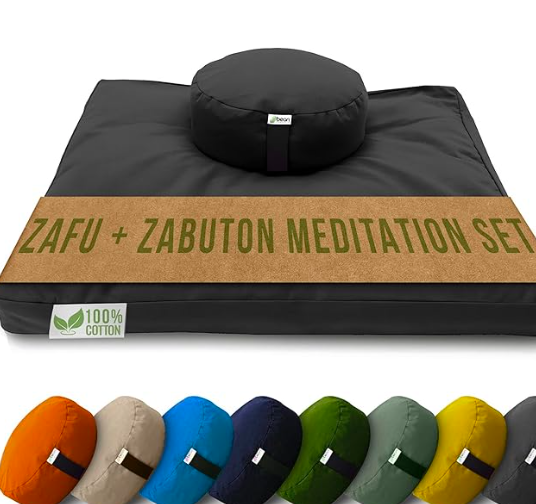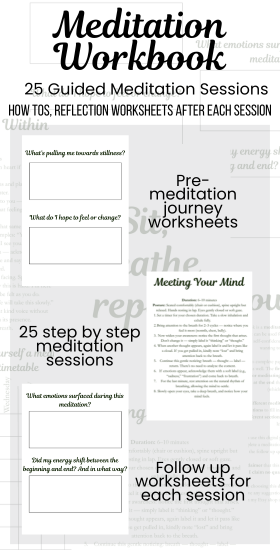1. Mantra Meditation
What It Is:
A contemplative practice that uses the rhythmic repetition of a word, phrase, or sound (a mantra) to anchor the mind and cultivate focus and calm.
How to Practice:
- Choose a simple mantra—either traditional (like “Om,” “Lam,” etc.) or personal, for example, I am enough, I am strong, I will prioritise myself.
- Sit comfortably, close your eyes, and breathe naturally.
- Silently (or softly) repeat your mantra, synchronizing it with your breath. When thoughts intrude, gently return to the mantra.
Benefits:
- Reduces stress, anxiety, and may support blood pressure and immune health.
- Enhances concentration, mental clarity, and self-awareness.
- May improve mood, creativity, sleep, and even cognitive function.
Check out: Why Practicing Mindfulness Is Important for Your Mental Health and Everyday Life
2. Zazen (Zen) Meditation
What It Is:
A traditional seated Zen practice focusing on posture, breath, and open awareness—famously called “just sitting” (shikantaza).
How to Practice:
- Sit cross-legged on a cushion (zafu)—options include Burmese, half-lotus, or full-lotus (although any position can be done, the most important is to be comfortable).
- Keep your spine straight but relaxed; hands folded, eyes softly lowered.
- Breathe naturally and quietly through your nose. Don’t control breathing; simply observe it.
- When thoughts arise, neither engage nor reject them—just let them pass and gently return to posture.
Benefits:
- Increases attention span, self-confidence, emotional regulation, compassion, joy, and gratitude.

Bean Products Meditation Cushion Mat Set – Zafu Floor Pillow Organic
Our Zafu and Zabuton set is designed to support proper posture for the back, hips, knees, ankles and feet.
3. Chakra Meditation
What It Is:
An energy-focused practice guiding attention through the body’s seven chakras—from root to crown—via visualisation, colours, breath, and often mantras or affirmations.
How to Practice:
- Sit or lie comfortably and breathe deeply.
- Move attention from the root (base of spine) up through the sacral, solar plexus, heart, throat, third eye, to the crown—visualize colors (e.g., red, orange, yellow, green, blue, indigo, violet).
- Optionally use corresponding mantras: Lam (root), Vam (sacral), Ram, Yam, Ham, Om, etc.
- Add affirmations like “I am safe,” “I am powerful,” “I am love,” or crystals/colour focus to support each chakra.
Benefits:
- Helps reduce stress, improve focus, increase energy, and foster self-awareness and inner peace.
- When balanced, chakras might positively affect emotional wellbeing and contentment.
4. Metta (Loving-Kindness) Meditation
What It Is:
A Buddhist practice of cultivating unconditional kindness toward oneself and others by reciting heartfelt phrases.
How to Practice:
- Sit quietly and mentally repeat loving phrases such as:
- Self: “May I be happy, healthy, and at peace.”
- Loved one: “May you be happy.”
- Neutral person: “May you be safe.”
- Difficult person: “May you be free from suffering.”
- All beings: “May all beings be peaceful and content.”
Benefits:
- Fosters self-compassion, lessens negative emotions, and improves mental health, including reducing stress or burnout.
- Enhances positive emotions, empathy, connection, and potentially reduces physical pain.
- Many meditators report a sustained sense of peace and confidence: “Metta can give you a strong feeling of confidence and peace that you can hold on to…”







